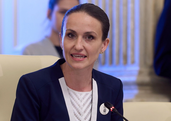Romania's insurance sector is strengthening its performance against the backdrop of a dynamic market undergoing significant structural transformation, according to a new study on developments in the insurance markets of Central and Eastern Europe, conducted by a consultancy firm in partnership with a research provider.
"Romania stands out as one of the most dynamic insurance markets in the region, while also undergoing structural transformation. Despite an increase in claims - net compensation rose by 43.7% compared with the previous year - Romania has significantly reinforced its underwriting discipline," the study notes.
The market's combined ratio fell to 0.95, down from 1.02 in 2021, driven by operational restructuring and improved efficiency, agerpres reports.
"Romania's insurance market is adapting and is on a strong path towards improving results. The better combined ratio and lower expense ratio show a market that is becoming more disciplined, more efficient, and more closely aligned with European supervisory standards," said Alina Simion, Audit & Assurance Director, Forvis Mazars in Romania.
Data from the Financial Supervisory Authority (ASF) confirms this stabilisation trend in the first half of 2025.
Gross written premiums reached RON 12.3 billion, an 8% increase compared with the same period in 2024. General insurance continues to dominate the market, accounting for 79% of total premiums, while motor insurance - RCA and CASCO - remains the main business line, with a combined volume of RON 7 billion. The RCA segment alone reached RON 5.2 billion, up 10%.
"Life insurance recorded robust momentum, increasing by around 21% in the first half of 2025, according to ASF data. Unit-linked products rose by 41%, accounting for one-third of all premiums, reflecting stronger demand for protection products tied to saving and investment," the report adds.
Efficiency efforts are also visible in the cost structure. "Romania has recorded one of the fastest optimisation rates in Central and Eastern Europe, with the expense ratio dropping to 0.31 in 2024 from 0.45 in 2018. This transformation has been supported by extensive digitalisation, strengthened governance, enhanced supervision - following the ASF-EIOPA balance sheet review - as well as broader market consolidation," the report states.
With an increasingly demanding regulatory agenda, compliance is becoming a strategic element of corporate development.
"Romanian insurers are entering a stage in which regulatory changes are no longer just about meeting deadlines - they are directly reshaping business models. The combined pressures created by DORA, the Solvency II revisions and the first CSRD reporting cycle are accelerating investment in data, controls and operational resilience. Insurers that approach this as a strategic transformation, rather than as mere compliance, will secure long-term competitive advantage," said Razvan Butucaru, Partner and Financial Services & Advisory Leader, Forvis Mazars in Romania.
With an insurance penetration rate of just 1.3% of GDP - one of the lowest in the EU - Romania retains substantial untapped potential. Rising demand for protection products, regulatory modernisation and strengthened operational capabilities suggest a gradual shift towards a more balanced, resilient and growth-oriented market model.
The study "CEE Strategic Resilience in Insurance: Outlook 2025", produced by Forvis Mazars in partnership with EMIS, shows that Central and Eastern Europe is becoming one of the most dynamic and resilient centres of the European insurance market. Between 2018 and 2024, non-life premiums increased from EUR 18 billion to EUR 28.5 billion - a 58% rise that surpasses the pace of many mature Western European markets. Despite inflation and regulatory pressures, the region is consolidating its role as a pillar of European financial stability.
The analysis covers six key markets - Croatia, Czechia, Hungary, Poland, Romania and Slovakia - and shows that most countries maintain a combined ratio below 1 in the non-life segment, confirming solid profitability and robust operational discipline. Although insurance penetration remains low - around 2.2% of GDP compared with 6-9.5% in Western Europe - this gap reflects significant growth potential as markets mature and consumers become more sophisticated.
Overall, the study outlines a region entering a new phase - one defined by strategic resilience, accelerated digitalisation and alignment with increasingly complex regulatory standards. Insurers that turn compliance into a competitive advantage and invest in technology and governance will strengthen their long-term position in the European insurance landscape, the authors conclude.
In Romania, Forvis Mazars has 30 years of experience in audit, tax and financial consultancy, outsourcing and sustainability, and a local team of more than 370 professionals.
EMIS is a leading provider of multi-sector, multi-country research for the world's fastest-growing markets. It delivers trusted information for more than 370 industries and over 16 million companies (including more than 190,000 M&A and ECM transactions) across 197 markets.
































Comentează